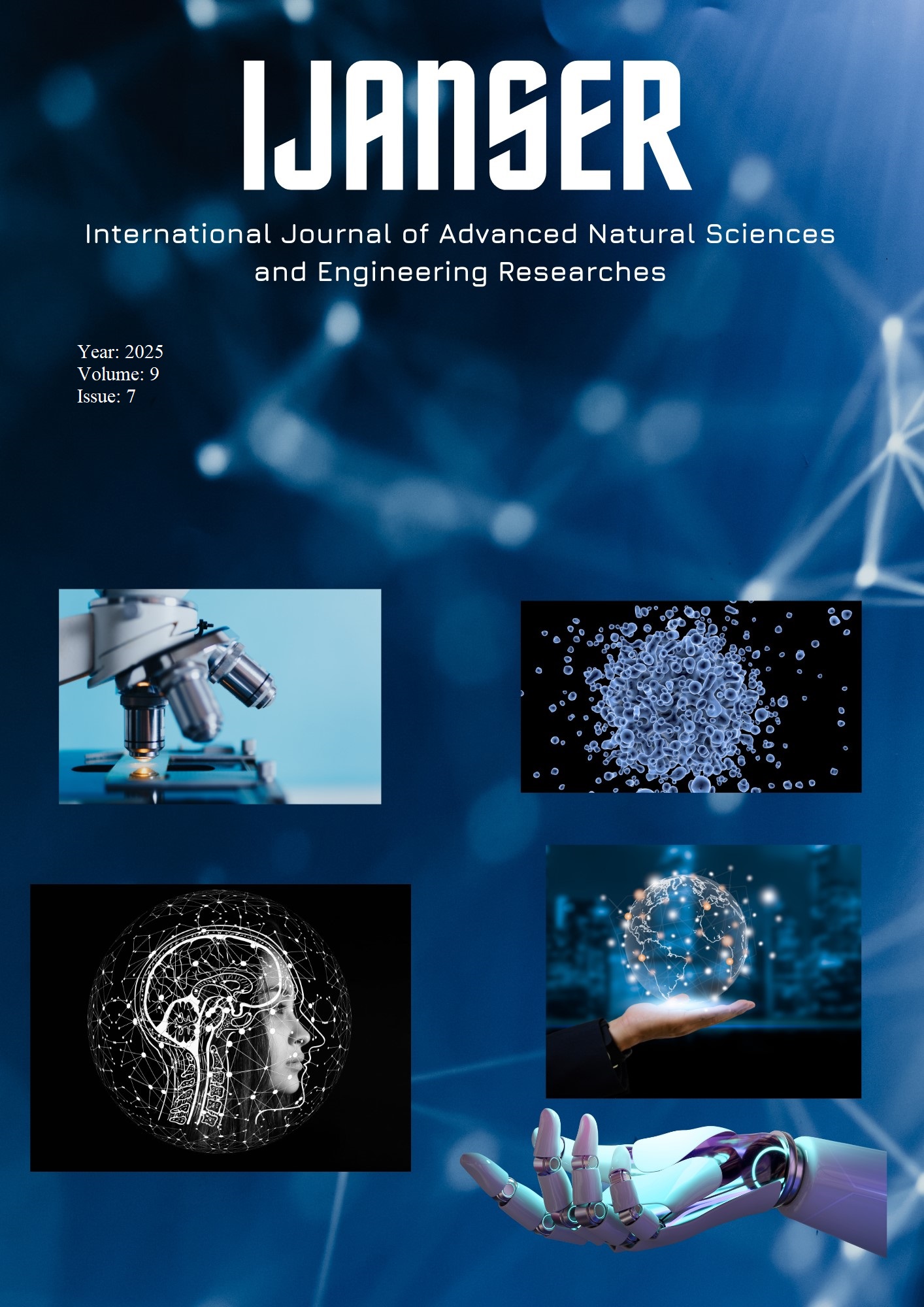Sequence Analysis of TP53 Suppressor Gene in Women with Breast Cancer in Mosul City
Keywords:
TP53 Gene, Sequencing, Exon, Polymorphism and Breast CancerAbstract
Mutations in the TP53 gene, which often result in P53 protein dysfunction, are associated with
more than 75% of malignancies. DNA damage and hypoxia activate TP53, a protein that facilitates DNA
repair and regulates cellular aging and apoptosis. These elements play a vital role in tumor suppression
and also alter cellular responses associated with cell cycle regulation. During September and November
2021, 96 recommendations were issued for female patients aged 35–45 at Mosul's Alternative Nuclear
Medicine and Oncology Hospital. One cohort comprised 25 healthy women, while the other encompassed
71 women diagnosed with breast cancer. This work employed DNA sequencing technology with various
physiological parameters and blood components to detect TP53 polymorphisms at codon 249 in exon 7
and (rs1042522) in exon 4, as well as the nucleotide sequences of the amplified areas. For instance, the
levels of hemoglobin, urea, creatinine, erythrocytes, platelets, and leukocytes. Sequencing study of the
gene's enlarged exons revealed that exons 3, 4, and 6 exhibited varying nucleotide quantities, but exon 5
remained constant. Additionally, a distinctive TP53 genotype with the GeneBank code LC682536.1 was
identified at the NCBI global gene site in Mosul. A novel P53 tumor suppressor protein phenotype was
found in Mosul, with the GenBank accession number BDF83325.1. The research indicated that urea
concentrations in patients were 38.2 mg/dl, and the CA15-3 ratio was 23 U/ml when comparing patients
to healthy controls. The results indicate that, in comparison to healthy controls, breast cancer patients had
significantly lower levels of urea, creatinine, and CA15-3 in their blood plasma. The present investigation
revealed a substantial reduction in the total counts of white blood cells, red blood cells, platelets, and
hemoglobin levels in the blood of breast cancer patients.
Downloads
References
Mattiuzzi, C. and Lippi, G. (2019). Current cancer epidemiology. Journal of epidemiology and global health, 9(4): 217.
Ferlay, J.; Colombet, M.; Soerjomataram, I.; Parkin, D. M. and et al. (2021). Cancer statistics for the year 2020: An overview. International Journal of Cancer., 149(4): 778-789.
Ahmad, A. (2019). Breast cancer statistics: recent trends. Breast Cancer Metastasis and Drug Resistance., 1-7.
Momenimovahed, Z. and Salehiniya, H. (2019). Epidemiological characteristics of and risk factors for breast cancer in the world. Breast Cancer: Targets and Therapy., 11: 151.
Takahashi, C. and Kato, J. Y. (2022). Targeting Abnormal Cell Cycle in Cancer: A Preface to the Special Issue. Onco., 2(1): 34-35.
Liu, J.; Peng, Y. and Wei, W. (2021). Cell cycle on the crossroad of tumorigenesis and cancer therapy. Trends in cell biology.
Koff, J. L.; Ramachandiran, S. and Bernal-Mizrachi, L. (2015). A time to kill: targeting apoptosis in cancer. International journal of molecular sciences., 16(2): 2942-2955.
Mohammad, R. M.; Muqbil, I.; Lowe, L.; Yedjou, C. and et al. (2015). Broad targeting of resistance to apoptosis in cancer. Seminars in cancer biology. Academic Press., 35: 78-103.
Sokoll, L. J. and Chan, D. W. (2020). Tumor markers. Contemporary Practice in Clinical Chemistry. Academic Press., 779-793
Nagpal, M.; Singh, S.; Singh, P.; Chauhan, P. and Zaidi, M. A. (2016). Tumor markers: A diagnostic tool. National journal of maxillofacial surgery., 7(1): 17.
Levine, A. J. and Puzio-Kuter, A. M. (2010). The control of the metabolic switch in cancers by oncogenes and tumor suppressor genes. Science., 330(6009): 1340-1344.
Shortt, J. and Johnstone, R. W. (2012). Oncogenes in cell survival and cell death. Cold Spring Harbor perspectives in biology., 4(12): 009829.
Zhao, M.; Sun, J. and Zhao, Z. (2013). TSGene: a web resource for tumor suppressor genes. Nucleic acids research., 41(1): 970-976.
Aubrey, B. J.; Strasser, A. and Kelly, G. L. (2016). Tumor-suppressor functions of the TP53 pathway. Cold Spring Harbor perspectives in medicine., 6(5): 026062.
Olivier, M.; Hollstein, M. and Hainaut, P. (2010). TP53 mutations in human cancers: origins, consequences, and clinical use. Cold Spring Harbor perspectives in biology., 2(1): 001008.
Iranpur, V. and Esmailizadeh, A. (2010) Rapid Extraction of High Quality DNA from Whole Blood Stored at 4ºC for Long Period. Department of Animal Science, Faculty of Agriculture, Shahrekord University, Shahrekord, Iran. www. Protocol-online.org.
Doffe, F.; Carbonnier, V.; Tissier, M.; Leroy, B. and et al. (2021). Identification and functional characterization of new missense SNPs in the coding region of the TP53 gene. Cell Death and Differentiation., 28(5): 1477-1492.
Kim, M. P. and Lozano, G. (2018). Mutant p53 partners in crime. Cell Death and Differentiation., 25(1): 161-168.





